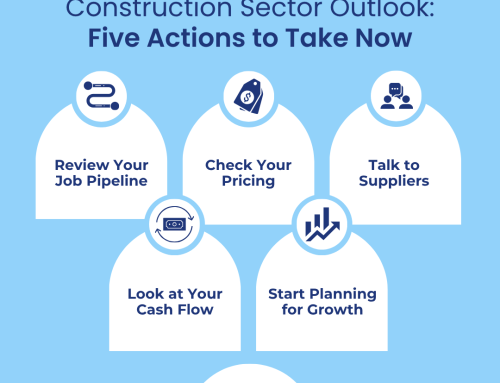Melbourne’s Declining Zones 2025-2027: Where the Work Won’t Be and What You Can Do Now
This article builds upon our previous Melbourne Growth Corridors blog titled “Where the Work Will Be and What It Means for Your Business,” shifting the focus to areas that are likely to stagnate or decline through 2027. As the business coach trusted by Melbourne owners, I will guide you through the suburbs where demand is cooling, explain the practical implications for your profit margins and workforce, and demonstrate how small business coaching in Melbourne can help you avoid potential pitfalls.
I’m Ashley Thomson, founder and managing director of Tenfold Business Coaching. Over the past 20 years, I’ve worked as a business engineer and coach with organisations such as Coles Group, Myer, ANZ Bank, Telstra, and Zurich Insurance, gaining firsthand insight into what makes great businesses thrive. I hold a Master of Entrepreneurship and Innovation, a Graduate Diploma in Business Management, and a Bachelor of Engineering (Honours) from Swinburne University. In 2019, I was inducted into the Coaching Hall of Fame in recognition of my consistent, world-class results for clients. Today, I lead an award-winning team dedicated to helping owner-operators in manufacturing, wholesale, distribution, and construction trades grow profitably and strategically.
Why Some Suburbs Are Fading from the Spotlight
By 2027, not all parts of Greater Melbourne will experience the boom. Two main factors are causing the slowdown.
First, government planning and funding shifts have reduced greenfield housing allocations in Melton, Wyndham, Hume, and Whittlesea, removing nearly 95,000 homes from earlier draft targets. Simultaneously, infrastructure spending will decrease from a record $24 billion in 2023-24 to an estimated $16 billion by 2028-29, with focus returning to inner-city activity centres.
Second, post-pandemic market saturation in the CBD and Docklands has pushed office vacancies above 20 percent, halting fit-out and maintenance work. Inner-ring suburbs with mature housing are also slowing as infill sites become scarce and developers redirect funds to growth corridors further west and north.
Specific Suburbs and Regions to Watch
Docklands and CBD Office Precinct
In the Docklands area and the central business district, office towers are often half-empty, and vacancy rates have risen to over 20 percent. Commercial landlords are putting off renovation and refurbishment projects because real estate investment trusts are shifting their funds toward developing new logistics hubs in greenfield sites. For trades such as electrical work, heating, ventilation and air conditioning, glazing, and fit-out services, this situation means there are fewer new contracts available and increased competition for the maintenance work that still exists.
Inner East Spillovers: Richmond and Cremorne
Richmond and Cremorne have experienced an oversupply of apartment conversions, especially one- and two-bedroom units, which are having difficulty leasing. At the same time, retail strips in these suburbs are facing approximately ten percent vacancy rates as more consumers opt to shop online. These trends mean that shop-fitters and façade restoration specialists are encountering longer tender cycles and reduced margins on the projects they secure.
Outer North-West: Broadmeadows and Campbellfield
Industrial land in Broadmeadows and Campbellfield, which was zoned in the 1990s, is currently under review as key freight terminal operations are shifting their focus to Truganina and Werribee. The planned road upgrades on the Hume Highway have been postponed, resulting in bottlenecks that make it difficult for new developments to proceed smoothly. Local fabrication and transport trades are already experiencing sporadic tender packages and delays in permit approvals, forcing them to compete for fewer and smaller jobs.
Growth Corridor Targets Cut: Melton and Wyndham
The city’s long-term growth plan has reduced Melton’s new-home targets by 40 percent and Wyndham’s by 15 percent. Major infrastructure projects, including planned schools, community centres and arterial roads, have been postponed beyond 2027. This has resulted in civil contractors and concreters facing gaps in their pipelines and delays in their PSP sequences that are driven by budget constraints.
South-East Fringe: Cranbourne East and Clyde
In Cranbourne East and Clyde, the adoption of residential land has fallen short of expectations, partly because of the slow progress in the upgrades to the Princes Freeway. Retail development projects are currently on hold until funding for the electrification of Pakenham is secured. Additionally, businesses involved in landscape construction and pool installation are dealing with unpredictable start dates, which makes it difficult to plan for labour and equipment requirements.
Practical Impacts for Trades and SMEs
Operating in a declining zone carries real costs on multiple fronts. Margin erosion is often the first sign as competitive pressures and unsold stock force prices down. Abandoned or paused projects lead smaller contractors to bid more tightly just to secure work, which further squeezes profits. Project flow becomes unpredictable with stop-start infrastructure releases causing feast and famine cycles. During peak seasons, labour needs spike then vanish, inflating overtime and subcontractor costs. Meanwhile, skilled tradespeople begin to relocate to growth corridors, creating local labour shortages. Emergency hires or last-minute training increase overhead costs. Idle depots, leased equipment and under-utilised vehicles all add to fixed-cost burdens without the corresponding maintenance or service contracts to justify them.
How Tenfold Business Coaching Shields Your Business from Declining Markets
At Tenfold Business Coaching, we work closely with owner-operators on a one-on-one basis to map their client base against growth and decline projections. First, we identify which service lines you currently offer that might face risks in the stagnating suburbs so you can reorient your marketing efforts and tender focus towards active corridors such as Tarneit, Officer South and Truganina. Next, we build detailed financial models that stress-test revenue under ten and twenty percent backlog reductions, pinpointing the breakeven project volumes in each geographic area and sequencing your capital expenditure to align with realistic opportunities. Operationally, we assist you in developing lean field-service processes for quicker deployment between regions, establish satellite hubs in areas experiencing growth to avoid long-haul travel, and introduce complementary services such as strata maintenance to offset delays caused by new-build slowdowns. Finally, our team refines your workforce strategy by designing recruitment frameworks aligned with TAFE intakes, implementing cross-training so your crews can switch from residential to light industrial work, and deploying digital scheduling tools to manage labour peaks and troughs effectively.
Case Study: Pivoting Away from Stagnation
One mechanical services small or medium enterprise in Melbourne faced a thirty percent drop in commercial fit-outs in Docklands. With guidance from Tenfold Business Coaching Melbourne, they ran two-horizon financial scenarios that showed the business was only viable if sixty percent of revenue shifted to Melton and Werribee industrial estates. They then redesigned their operations manual to specialise in factory automation and refrigeration services aimed at food processing clients in these growth precincts. A targeted marketing campaign secured three multi-year maintenance contracts in Truganina, which enabled a twelve percent reduction in variable overheads and a four percent increase in gross margins within nine months.
Next Steps: Position Your Business for Success
First, audit your current project pipeline against the declining zones outlined above to better understand where your revenue is most at risk. Then, engage a local business coach, such as Tenfold Business Coaching Melbourne, to develop a customised zone-risk mitigation plan. Once you have that plan in place, revisit your financial model immediately to test downside scenarios rather than waiting for the downturn to materialise. At the same time, restructure your operations so you can switch between growth and decline areas smoothly, and invest in strategic marketing to connect with project leads well ahead of competitors in active corridors.
Ready to Thrive, Not Just Survive?
Tenfold Business Coaching Melbourne assists owner-operators in navigating changing demand through strategic planning, flexible financial modelling, operational improvements and workforce upskilling. Don’t wait for shrinking suburbs to squeeze your profit margins. Get in touch with Tenfold Business Coaching today for a complimentary introductory session in business coaching Melbourne and small business coaching Melbourne. Let us help you plan your next 12 months so you can focus on the areas where the work is most needed and avoid zones that are winding down.






